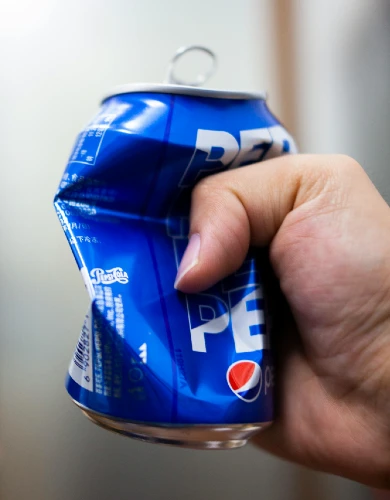Black mass recycling
Black mass is the latest innovation in commercial recycling, addressing the growing issue of battery waste.
Black mass is composed of crushed remnants from batteries, containing valuable metal components that can be reused to manufacture new batteries.
This article explains everything you need to know about black mass recycling. Here’s what we cover:
- The growing problem of battery waste
- Turning battery waste into black mass
- Black mass: the rise of a new commodity
- The development of black mass recycling
- How can your business dispose of battery waste?
The growing problem of battery waste
The world is electrifying, and batteries are at the centre of it. Lithium-ion batteries are extensively used in consumer electronics and, more recently, in electric vehicles (EVs).
These batteries may have a life span of as little as two years for lower-end smartphones and up to twenty years for EVs. Unfortunately, once spent, these batteries can no longer be recharged, becoming a problematic and hazardous waste that needs to be managed.
Turning battery waste into black mass
A new recycling technology has been developed in which recycling facilities dismantle, crush, and shred batteries to produce a material called black mass.
Black mass contains high concentrations of the essential metals needed to manufacture new batteries: lithium, cobalt, nickel, and manganese.
Black mass offers an environmentally friendly alternative to mining these metals and is particularly valuable for countries that rely on imports of these resources.
Black mass: the rise of a new commodity
Mineral deposits are becoming increasingly depleted and expensive to mine, and many key metal resources (e.g. lithium, cobalt, nickel) are within countries with questionable human rights records, rampant corruption, and poor environmental oversight.
In contrast, refined metals sourced from metal recycling offer a much-improved solution. Not only does it minimise waste going to landfills and recover useful materials, but the metal concentrations of waste products like black mass are competitive with those of refined/extracted products from the mining industry:
| Metal | Black mass | Extracted/Refined products |
|---|---|---|
| Lithium | 2-6% | 0.1-0.2% (Brine) |
| Cobalt | 5-20% | 5-15% (Concentrate) |
| Nickel | 5-15% | 10-20% (Concentrate) |
| Copper | 3-10% | 20-30% (Concentrate) |
| Aluminum | 1-5% | 20-30% (Ore) |
| Iron | 1-5% | 60-65% (Ore) |
| Manganese | 2-10% | 44-68% (Concentrate) |
Source: AquaMetals
What’s causing the rise of the black mass recycling market?
Black mass is emerging as a commodity product because of its attractive value proposition: Environmentally sound metal extraction that contributes to a circular economy.
Mentions of black mass in corporate earnings reports have grown significantly, including those of commodity trading giant ‘Glencore’ and chemical company ‘BASF’.
The recognition of black mass as a tradable commodity incentivises the development of battery recycling facilities.
The development of black mass recycling
Governments worldwide, including the UK, are incentivising the construction of black mass recycling facilities to help retain this valuable resource within their borders.
Here’s a summary of the latest developments in the world’s major economies.
EU: Battery Regulations
The EU has implemented regulations to significantly restrict the export of black mass to enhance its circular economy and secure valuable battery raw materials within the bloc. The new EU Battery Regulation, adopted in June 2023, stipulate that by no later than December 31, 2031:
- EV batteries sold in the bloc must source a proportion of its metals from recycling (to incentivise recycling facilities within the EU).
- EU recyclers must achieve ambitious material recovery rates (to ensure they can compete with their Asian counterparts).
Additionally, there’s an attempt to classify black mass as ‘hazardous waste’ to make exporting it more challenging. Other EU politicians are proposing an outright ban on black mass exports outside of the bloc.
US: Tax credits & incentives
Following the adage: “The EU regulates, the US innovates”, America is encouraging more US-based metal recyclers who can process black mass by throwing money at it. The Inflation Reduction Act, for instance, includes provisions that favour the use of domestically recycled materials in manufacturing processes by offering tax credits.
The Department of Energy has invested heavily in the US battery recycling industry, with federal loans totalling $2.3Bn given to Redwood Materials and Li-Cycle.
India: Tech development
While India lags in EV adoption, its colossal population’s use of everyday electronics like smartphones and laptops generates vast amounts of battery waste.
India has a fast-growing battery manufacturing sector and does not produce raw materials domestically.
To reduce reliance on imports, local black mass recycling capacity is expanding and can now process over 20,000 tonnes of battery scrap each year.
China: Building deeper moats
China, already dominating the market, continues building taller walls around its insular market. In 2023, China accounted for 59% of global EV sales. This is double that of the EU and US combined, meaning that China will become the leading producer of black mass anyway.
As a result, they have already implemented policies to ensure a closed-loop system where all spent batteries can be fully recycled in-house to produce even more batteries.
Black mass recycling in the UK
The UK remains “in consultation” regarding updating its regulations on EV battery recycling to prevent the rapid escape of black mass to its main export destination: China. Current commercial waste regulations make no mention of black mass, and there are no facilities to turn this black powder into metals to feed local battery manufacturing demands.
The UK’s battery recycling capacity is limited, but Altilium Metals plans to build the country’s first industrial-scale facility near Newcastle. This facility could become the largest in Europe, with an estimated annual output of 40,000 tonnes of black mass.
How can your business dispose of battery waste?
Whatever happens to the black mass market over the next few years, your company can do its part by ensuring any spent batteries are destined for recycling and not end up in landfill, where their precious metal contents may be forever lost.
Firstly, contact the retailer where you purchased your electronics. Most must take back any electronics and their batteries sold to you.
Alternatively, some commercial waste collection providers offer one-off battery collection and disposal services. There are two types of collection services for batteries:
- Batteries found in IT equipment, phones, etc., which are non-hazardous.
- Car batteries which are classed as hazardous waste.
Where are battery recycling facilities in the UK?
As we’ve discussed in this article, battery recycling capacity in the UK is extremely limited. But here is a list of the UK’s premier battery recycling facilities:
- Veolia: Veolia has a lithium-ion battery recycling facility in Minworth on the outskirts of Birmingham. They focus on collecting and recycling end-of-life lithium-ion batteries.
- Cellcycle (SER Group): Based in Manchester, Cellcycle focus on the recycling of end-of-life batteries. They hold an Approved Battery Treatment Operator (ABTO) permit, making them one of the few accredited facilities in the UK.
- Recyclus Group: Located in Wolverhampton, this facility is the UK’s first industrial-scale lithium-ion battery recycling plant. It has the capacity to process up to 22,000 tonnes of batteries annually and is designed to handle most types of lithium-ion batteries.

